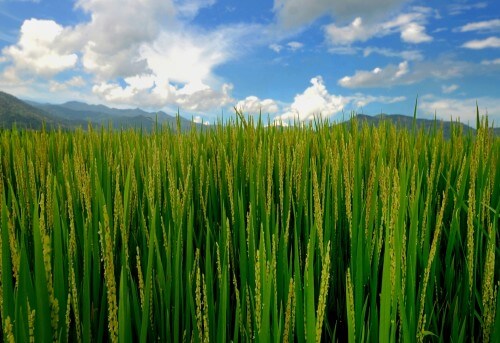Dr. Itai Kellogg from the Department of Geography and Environmental Development at Ben-Gurion University of the Negev and his research partners predict that by the year 2050 high levels of CO2 may significantly lower the amount of zinc and iron in crops

According to estimates, about two billion people suffer from iron and zinc deficiency which leads to the death of about 63 million people every year. It is expected that by the year 2050 the levels of carbon dioxide (CO2) will rise significantly and as a result the levels of zinc and iron in the crops that currently provide them for a large part of the population will be severely damaged. This constitutes the most significant health threat ever presented in the context of climate change.
Previous studies on the growth of crops grown in greenhouses and CO2 chambers with high levels of the gas found a reduction in nutrients, but these studies were criticized for using artificial growing conditions. Experiments using Free Air Carbon Dioxide Enrichment (FACE) technology have become standard, as FACE allows crops to be grown in open fields with high levels of CO2. But these early studies had a small sample size and the results were inconclusive.
In an article recently published in the prestigious journal Nature, Dr. Itai Kellogg from the Department of Geography and Environmental Development at Ben-Gurion University of the Negev and his partners analyzed data that included 41 varieties of grains and legumes from groups grown in seven different FACE fields in Japan, Australia, and the United States. The CO2 level at all seven sites was in the range of 586-546 parts per million (ppm). They tested the nutritional concentrations of the edible parts of wheat, rice, corn, sorghum, soybeans and field peas.
The results showed a significant decrease in the concentrations of zinc, iron and protein in the grains. For example, zinc, iron, and protein concentrations in wheat grains grown in FACE sites decreased by 9.3%, 5.1%, and 6.3%, respectively, compared to wheat grown in a high CO2 environment. Zinc and iron also decreased significantly in legumes, but not as much as in protein.
The definitive finding of the study showed that grains and legumes lost iron and zinc at high CO2 levels. This is the most significant finding, as approximately 3-2 billion people worldwide get 70% or more of the zinc and/or iron in their diet from cereal crops and legumes. This is of particular concern in the developing world, where zinc deficiency and iron deficiency are considered a significant health problem.
In the same topic on the science website:
To save life in the sea (and the fish) carbon emissions must be reduced

5 תגובות
For most of the years of our world, the CO2 concentration was several times higher than today, and now another 100 ppm brings all the possible catastrophes?
In my opinion, there was a mistake in the translation of the article,
The 63 million refers to (Years of potential life lost),
From the study, the line in question:
"causing a loss of 63 million life-years annually"
Farm animals enjoy enriched food. And animals forced to live in the wild will lick metal parts that man left in the environment. And the vegans who "identify" with the animals, could not identify with man. Because the biology and living conditions are different between a chicken, a cow and a hamster, therefore it is not possible for them to "enjoy" a lifestyle uniform.
And what will the animals eat 🙂 ?
What's the problem? Iron deficiency - consume eggs and meat. For health :-)